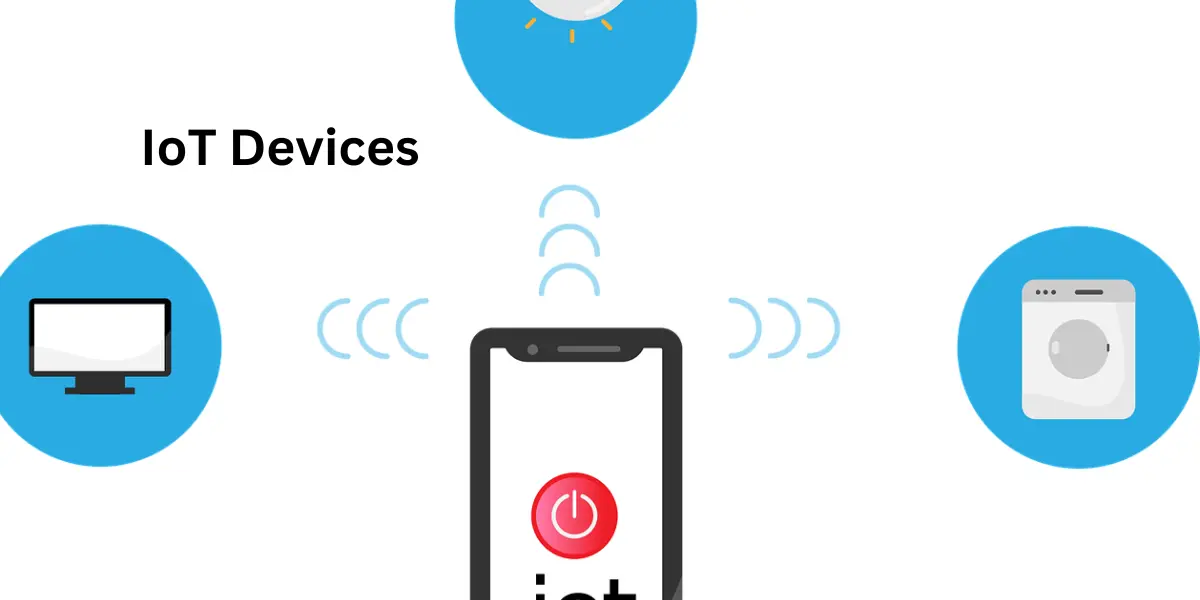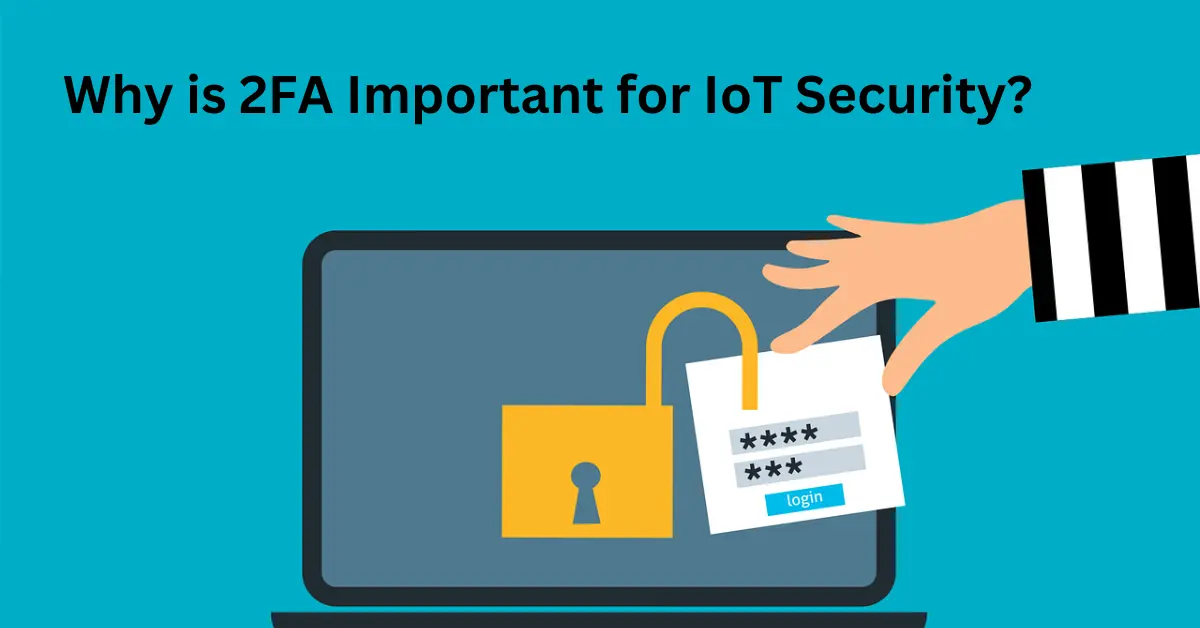How to Secure Your IoT Devices: The Ultimate Guide for 2024
Published: 12 Dec 2024
In today’s digital world, the Internet of Things (IoT) has become an essential part of everyday life. From smart home devices like thermostats and security cameras to wearables like fitness trackers, IoT devices provide us with unmatched convenience and functionality. However, as we embrace these smart devices, it’s important to remember that they also present potential security risks.
Without proper precautions, hackers can exploit vulnerabilities in IoT devices to access your data, invade your privacy, or even compromise your home network. Fortunately, securing your IoT devices doesn’t have to be complicated. How to Secure Your IoT Devices:
What Is IoT Security and Why Does It Matter?
IoT security refers to the measures taken to protect IoT devices and networks from unauthorized access, attacks, and data breaches. As more and more devices get connected to the internet, the potential for vulnerabilities increases. Unlike traditional computers or smartphones, many IoT devices have limited security features, making them a prime target for cybercriminals. what is an information technology
Insecure IoT devices can be exploited for:
- Data theft: Personal information, financial data, or even private conversations.
- Device hijacking: Hackers gaining control of your devices for malicious purposes.
- Network infiltration: Once a hacker gains access to one device, they can use it as a gateway to attack other devices on the same network.What is IoT (Internet of Things)
- In other words, if you don’t secure your IoT devices, you’re essentially leaving the door open for potential threats. Let’s explore how to keep these devices safe.

Step 1: Change Default Passwords Immediately
Many IoT devices come with default passwords (like “admin” or “12345”) that are easy for hackers to guess. These default passwords are often available online, making it very easy for someone to break into your device. The first step in securing your IoT device is to change its default password to something more secure.
How to Create a Strong Password: Key Guidelines
Creating a strong password is one of the most basic yet powerful ways to secure your IoT devices and online accounts. Weak passwords are one of the easiest ways for hackers to gain access to your accounts, and IoT devices are no exception. A strong password acts as your first line of defense against unauthorized access, protecting your data, privacy, and security.Cloud Computing Explained
Here’s a more detailed breakdown of how to create a password that’s difficult for anyone to crack:
Use at Least 12 Characters (or More)
Length matters. The longer your password, the harder it is for attackers to guess or crack it. 12 characters is generally considered the minimum for a strong password, though some experts recommend going even further—16 or 20 characters for maximum strength.
Why is length so important?
Brute-force attacks: Hackers often use automated tools to try every possible combination of characters until they find the right one. The longer the password, the more combinations they need to try, significantly increasing the time it would take to crack it.
Exponential growth: Adding more characters exponentially increases the number of possible combinations, making your password far more difficult to guess.
Mix Uppercase and Lowercase Letters
Use a combination of uppercase (A-Z) and lowercase (a-z) letters. This adds an extra layer of complexity to your password and makes it harder to guess.
For example, instead of “smart device,” a stronger password would be “SmarT DevIce” or “DeViCe 123”. Mixing cases reduces the chances of brute force attacks succeeding.
Tip: Avoid using predictable capitalization patterns like “IoT Device” (which follows a common structure). Instead, try alternating upper and lowercase letters randomly.
Include Numbers and Symbols
Incorporating numbers (0-9) and special characters like @, #, $, %, ^, &, etc., adds further complexity. This significantly increases the strength of the password because it broadens the range of possible combinations beyond just letters.
For example:
Instead of “password,” use “P@ssw0rd!23.”
Replace the letter “o” with a zero (“0”) or the letter “i” with an exclamation mark (“!”).
Why this helps: Many automated password-cracking tools are specifically designed to guess simple password variations (like replacing “o” with “0” or “a” with “@“). Using an unexpected combination of symbols and numbers makes it harder for these tools to succeed.
step 2: What is Two-Factor Authentication (2FA)?
Two-factor authentication (2FA) is an additional layer of security designed to ensure that only you can access your accounts, even if someone has obtained your password. While your password is the first factor of authentication (something you know), 2FA adds a second factor, typically something you have or something you are. This makes it much harder for attackers to gain access to your accounts, as they would need both your password and the second factor to succeed. discover 5g technology
For example, in the case of your IoT devices or accounts, once you enter your username and password, you will also need to verify your identity using a second form of authentication. This could involve receiving a code via SMS, email, or using an app like Google Authenticator or Authy.
Why is 2FA Important for IoT Security?

IoT devices are often vulnerable to attacks because many of them use weak, default, or reused passwords. Even if an attacker manages to guess or steal your password, they won’t be able to access your device or account without the second factor. Here’s why enabling 2FA is crucial:
Prevents unauthorized access: Even if a hacker has your password, they can’t access your account or device without the second factor.
Reduces the impact of password breaches: In the event your password is compromised (through a data breach or phishing attack), 2FA still keeps your devices and accounts safe.
Protects your privacy and data: With IoT devices linked to personal data (like health metrics, security footage, or financial information), 2FA ensures that only you or authorized individuals can access sensitive data. internet of things
Safeguards remote access: For IoT devices, you might control remotely (like security cameras or smart thermostats), 2FA ensures that even if your Wi-Fi network is compromised, the hacker can’t access your devices without the second factor.
Step 3: Keep Your Devices Updated
IoT manufacturers are continually working to patch security vulnerabilities and improve device functionality. This is why regular software updates are crucial for your device’s security. Most IoT devices, including cameras, smart thermostats, and speakers, offer automatic updates. If your device doesn’t have this option, make sure you check for updates manually regularly.
Why updates matter:
- Bug fixes: Manufacturers often release updates to address security flaws.
- New features: Many updates include new features that enhance your device’s functionality and security.
- Protection against new threats: Hackers constantly look for new ways to exploit vulnerabilities, and software updates help protect against these evolving threats.
- To ensure your IoT devices are protected, enable automatic updates or set a reminder to check for updates at least once a month.
Step 3: Secure Your Wi-Fi Network
Your Wi-Fi network is the backbone of your IoT devices. If your Wifi is insecure, hackers can gain access to all the connected devices on your network. Here’s how to secure your Wi-Fi network:
Use a strong Wifi password:
Ensure your router password is unique and hard to guess. Avoid common phrases like “123456” or “password.”
Enable WPA3 encryption:
WPA3 is the latest and most secure encryption standard for Wi-Fi. If your router supports it, enable it in your settings.
Disable WPS (Wi-Fi Protected Setup):
- WPS is a convenience feature that allows devices to connect to your network by simply pressing a button. While convenient, it’s also vulnerable to attack.
- Change your router’s default settings: Many routers come with default usernames and passwords (like “admin” and “password”). Change these to something more secure.
- Use a separate network for IoT devices: If possible, set up a guest network for your IoT devices. This isolates them from your main devices (like your laptop and phone), preventing hackers from accessing sensitive data if one of your IoT devices is compromised.
Step 5: Isolate IoT Devices with a Virtual LAN (VLAN)
For those who are tech-savvy, another great way to secure your IoT devices is by setting up a VLAN (Virtual Local Area Network). A VLAN allows you to segment your devices into different networks. For example, you can put your IoT devices on one network and your personal devices on another, making it harder for hackers to move from one device to another if they gain access to your network.
If your router supports VLANs, this can be an effective way to isolate your IoT devices from the rest of your network.
Step 6: Turn Off Devices When Not in Use
While it might seem like an obvious solution, turning off your IoT devices when you’re not using them can significantly reduce the risk of attacks. If a device is powered off, it can’t be hacked remotely.
For example, if you don’t need your smart speakers or cameras while you’re out, simply turn them off. This is a simple but effective way to minimize risk.
Step 7: Use a VPN for Remote Access
If you need to access your IoT devices remotely (such as checking your home security camera while on vacation), consider using a Virtual Private Network (VPN). A VPN encrypts your internet connection, making it more difficult for hackers to intercept your data.
By using a VPN, you can ensure that even when accessing your IoT devices outside your home network, your communication is secure.
Step 8: Choose Trusted Brands
When buying IoT devices, always choose reputable brands known for their focus on security. Trusted brands like Nest, Ring, Philips Hue, and Amazon Echo invest heavily in security and regularly release updates to protect against vulnerabilities.
Before purchasing an IoT device, check:
- Reviews: See what other users are saying about its security features.
- Manufacturer’s support page: Make sure they provide regular software updates and patches.
- Privacy policies: Understand how your data is handled and stored by the device manufacturer.
Step 9: Educate Everyone in Your Household
Security isn’t just about technology; it’s also about awareness. Make sure that everyone in your household is educated about the importance of securing IoT devices. Here are a few tips:
Use strong passwords: Encourage everyone to use strong, unique passwords for their devices.
Don’t click on suspicious links: Be cautious when clicking on links or downloading apps that claim to be IoT-related.
Turn off devices when not in use: Remind everyone to power down smart devices when they’re not needed.
Step 10: Monitor Your Devices Regularly
Finally, it’s important to monitor your devices for unusual activity. Many IoT devices come with companion apps that let you see what’s happening with your device in real-time. Use these apps to keep an eye on:
Unfamiliar devices connected to your network.
Alerts for unusual activity, like motion detection or unauthorized access attempts.
Device status to ensure everything is functioning properly.
Conclusion:
As IoT devices become an integral part of modern life, ensuring their security should be a top priority. By following these simple steps, you can significantly reduce the risk of hacking and keep your personal data safe. From changing default passwords to using two-factor authentication, there are easy, practical ways to protect your devices.
How Secure Are Your IoT Devices? Take the IoT Security Quiz!
| Test your knowledge and see how prepared you are to protect your Internet of Things (IoT) devices from cyber threats! |
|---|
Answer Key: |
Proudly powered by WordPress






